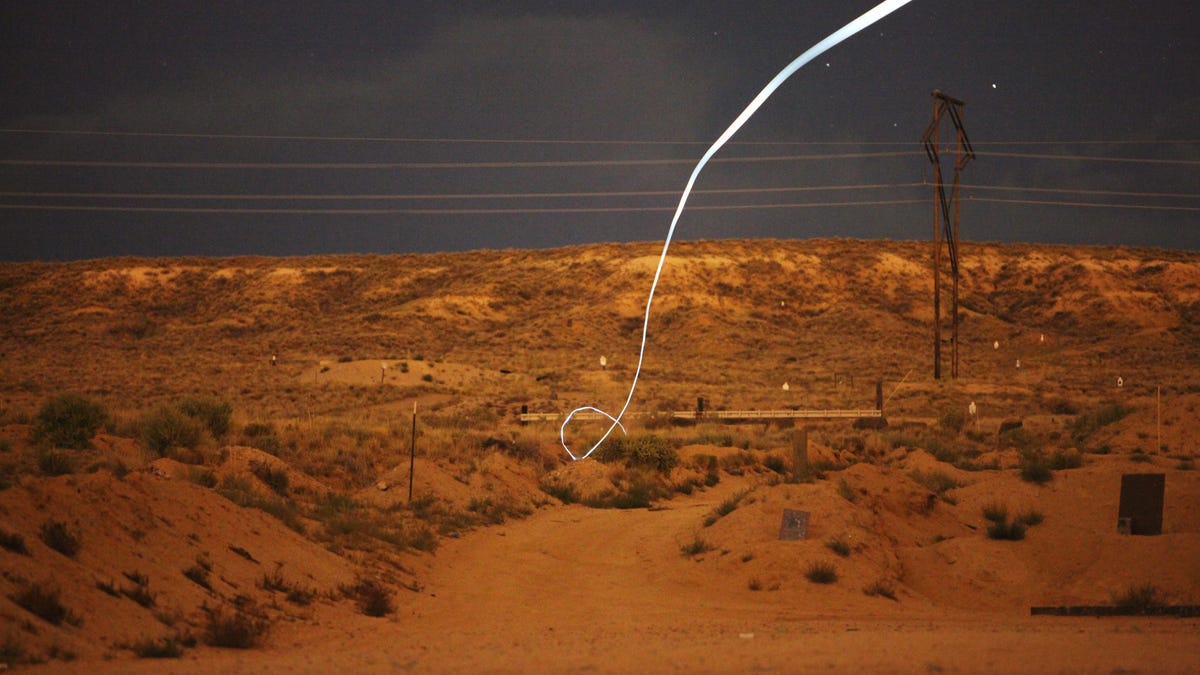Incoming! Self-guiding bullet could strike from a mile away
The four-inch munition should be able to strike within 8 inches of its target at a firing distance of a mile. It has built-in actuators and other electronics that help it zero in on its target.

A new design for a self-guiding bullet could allow sharpshooters to accurately fire at targets a full mile away.
The bullet, which is still in a prototype phase, is the brainchild of Sandia National Laboratories researchers Red Jones and Brian Kast. It is designed with built-in actuators and tiny fins that should allow it to rapidly adjust its path in flight.
Designed with the military, law enforcement, and recreational shooters as potential customers, the bullet is four inches long and has an optical sensor embedded in its nose for the detection of a laser on its target, Sandia said in a release today. The bullet also has built-in guidance and control electronics that receive data from the optical sensor and then manipulate the electromagnetic actuators. And the actuators use that data to steer small fins in order to direct the bullet directly to its target.
In the release, Sandia's Jones explained that the design of the self-guiding bullet required abandoning the traditional way rifle ammunition works. With conventional rifles, a fired bullet has to spin like a spiraling football pass in order to fly straight. But Sandia's bullet "flies straight due to its aerodynamically stable design," Sandia says, "which consists of a center of gravity that sits forward in the projectile and tiny fins that enable it to fly without spin, just as a dart does."
Although Sandia predicts that its self-guiding bullet could dramatically improve accuracy over long distances compared to traditional bullets, it doesn't promise perfect targeting. But according to a patent application Sandia filed, the new bullet could hit within eight inches of its target at a firing distance of a mile. That compares to a standard rifle-fired bullet, which tends to miss a target by about 29 feet after traveling a mile. Of course, a trained sniper or sharpshooter would no doubt be able to hit his or her target with little problem.
"As the bullet files through the air, it pitches and yaws at a set rate based on its mass and size," Jones explained in Sandia's release. "The natural body frequency of this bullet is 30 Hz, so we can make corrections 30 times per second. That means we can overcorrect, so we don't have to be as precise each time."
Sandia says that with commercially available gunpowder, the bullet will travel at speeds of 2,400 feet per second. But with customized gunpowder, it could hit military speeds. A Sandia field test demonstrated that the bullet's internal electronics and battery can survive the rigors of flying from rifle barrel to target. Presumably, they would not survive striking the target.
In a video, Sandia says it's evident that the bullet radically pitches as it's fired, but then pitches less as it gets down range. And because the bullet's movements stabilize the longer it's in flight, its accuracy improves the farther away the target is. "Nobody had ever seen that," Jones says in the Sandia release, "but we've got high-speed video photography that shows that it's true."

